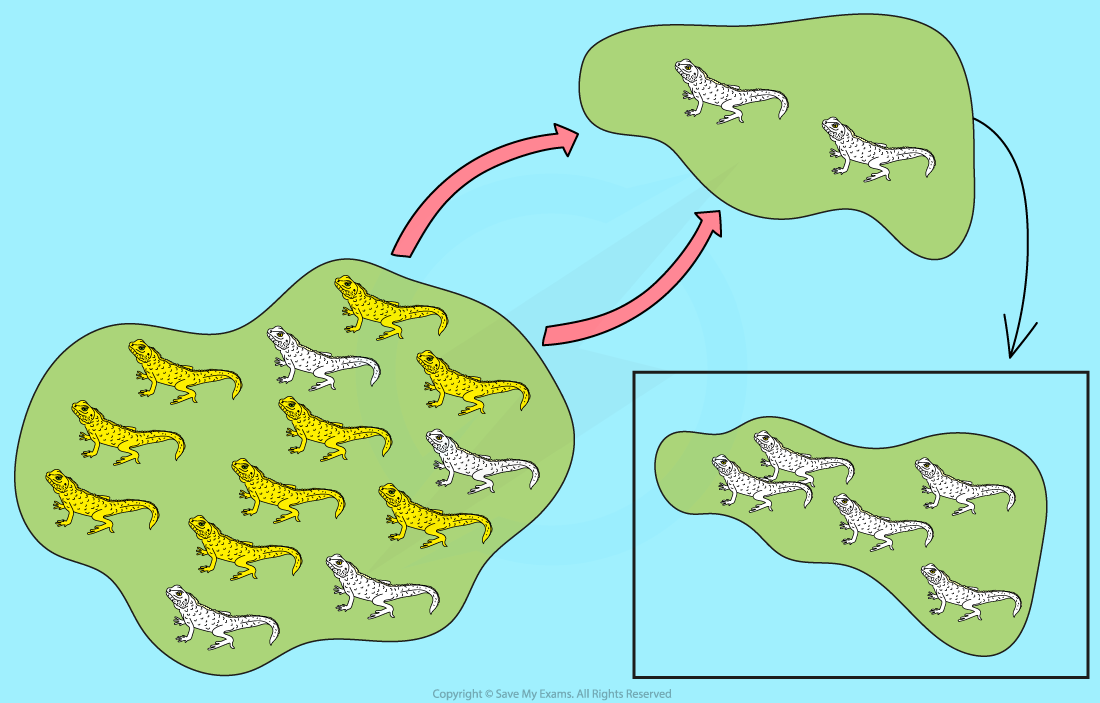Populations & their Allele Frequencies
Comparison of allele frequencies of geographically isolated populations
- Allele frequency is a term that assigns a relative frequency of an allele at a particular gene locus
- Alleles can vary from each other by as little as one nucleotide
- When a degree of geographic separation exists between two populations, this can cause differences in the frequencies of alleles to emerge
- Human allele frequencies vary by geography and ethnicity
- Examples of clear-cut allele frequency differences are rare in human populations because of the ease of travel and interbreeding
- This leads to a scarcity of truly isolated populations
- If there are more than one allele in existence for a particular gene, the respective allele frequencies must add up to 1
- Online databases list the frequencies of human alleles
- Alleles are sometimes referred to as polymorphisms which just means many (poly-) different forms (-morphisms) of a gene
- The most common type is called a single nucleotide polymorphism (SNP)
- Mathematical formulae such as the Hardy-Weinberg formula can be used to calculate phenotype frequencies from allele frequencies and vice versa
- Comparing allele frequencies can provide information for
- Identifying genetic associations with particular diseases
- Estimating the number of individuals with disease susceptibility within a population
- Estimating the level of drug resistance in a population
- Performing evolutionary and anthropological studies (eg. tracing the history of humans through time)
Basis of allele frequency analysis
- For any polymorphism, each individual carries two alleles per locus
- One is inherited from the mother, the other from the father
- Exception - this does not apply to alleles present on the X or Y chromosome
- Within a population, there are twice as many total alleles as there are individuals
- Homozygous individuals each contribute two of that allele to the total number of that particular allele
- Heterozygous individuals each contribute one of a particular allele to the total number of that allele
- For example, if there are eight individuals with the ZZ genotype, they contribute 16 Z alleles. Thirty-four Zz heterozygous individuals contribute a total of 34 Z alleles and 34 z alleles to the total
Worked Example
Consider the following isolated island populated by a certain species of lizard. On this island, the ratio of white lizards to yellow lizards is 4:9. The yellow pigmentation is caused by a dominant allele, Y. Lizards possessing the homozygous recessive genotype (yy) are white in colour.

Distribution of lizards on the island before and after the geological event.
A geological event caused the island to become divided in two; this is shown by the red arrows in the diagram above. One island sank below the ocean, killing all its inhabitants, whilst the other survived. Only two white lizards made it to the surviving half of the island. Fortunately, these were male and female and they were able to begin the recolonisation of the small island.
Calculate the allele frequencies of Y and y before and after the geological event.
Step 2: Calculate the allele frequency of y (from the phenotype frequency in Step 1)
The probability of two y alleles coming together through fertilisation is given by (q x q) or q2, where q is the allele frequency of the recessive allele, y
Therefore, q is the square root of the white phenotype frequency
Step 3: Subtract this from 1 to find the allele frequency of the dominant allele, Y
1 - 0.5547 = 0.4453
